
|
Now it is 3.9 mag (July 6, Thomas Lehmann). It has reached to the perihelion, but it is fainter than originally predicted. It is not observable now. In the Southern Hemisphere, it will be observable after mid July, and keeps observable while the comet will be fading gradually. It will not be observable after this in the Northern Hemisphere.
Date(TT) R.A. (2000) Decl. Delta r Elong. m1 Best Time(A, h)
July 11 8 20.87 24 35.0 1.216 0.343 14 5.0 21:00 (125, -7)
July 18 9 16.35 13 23.4 1.184 0.462 22 6.0 20:55 (112, -8)
|
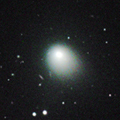
|
Now it is bright as 9.2 mag (July 11, Marco Goiato). It is expected to brighten up to 5 mag from autumn to winter. It keeps observable in excellent condition until autumn in the Southern Hemisphere. In the Northern Hemisphere, it will be unobservable soon, and it keeps unobservable until late November after that.
Date(TT) R.A. (2000) Decl. Delta r Elong. m1 Best Time(A, h)
July 11 23 51.09 -42 40.6 1.557 2.253 120 9.1 3:10 (344, 10)
July 18 23 41.42 -48 34.7 1.399 2.162 126 8.7 3:16 (353, 6)
|

|
It brightened up to 3.7 mag and became a naked eye comet in mid January (Jan. 13, Marek Biely). Now it is fading. But it is bright as 9.4 mag still now (July 10, Jakub Cerny). In the Northern Hemisphere, it keeps observable for a long time until the comet fades out. It is not observable in the Southern Hemisphere.
Date(TT) R.A. (2000) Decl. Delta r Elong. m1 Best Time(A, h)
July 11 14 54.52 68 31.0 2.612 2.592 77 9.3 21:00 (167, 55)
July 18 14 60.00 64 54.1 2.680 2.667 78 9.5 20:55 (161, 57)
|
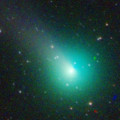
|
It brightened up to 6.0 mag in mid May (May 14, Chris Wyatt). Now it is fading. But it is bright as 9.0 mag still now (June 21, Marco Goiato). It is not observable now. In the Southern Hemisphere, it will be observable again after September, but the comet will be fainter than 13 mag.
Date(TT) R.A. (2000) Decl. Delta r Elong. m1 Best Time(A, h)
July 11 8 14.05 10 48.8 2.120 1.190 17 10.9 21:00 (117,-17)
July 18 8 18.53 12 2.0 2.260 1.283 11 11.4 20:55 (121,-20)
|
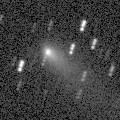
|
It brightened rapidly. Now it is so bright as 11.1 mag (July 10, Marco Goiato). It will brighten up to 11 mag from July to August. It is observale in good condition in the Northern Hemisphere, but it will be getting lower gradually in the Southern Hemisphere.
Date(TT) R.A. (2000) Decl. Delta r Elong. m1 Best Time(A, h)
July 11 20 21.36 9 38.2 0.760 1.694 144 11.3 1:09 ( 0, 64)
July 18 20 7.19 17 2.4 0.755 1.674 141 11.2 0:28 ( 0, 72)
|

|
Now it is bright as 9.7 mag (June 27, Chris Wyatt). In the Southern Hemisphere, it keeps observable in good condition for a long time until the comet fades out. In the Northern Hemisphere, it will be getting higher gradually after this, and will be observable in good condition while the comet will be fading gradually.
Date(TT) R.A. (2000) Decl. Delta r Elong. m1 Best Time(A, h)
July 11 2 4.71 8 24.4 1.623 1.699 76 11.3 3:10 (284, 33)
July 18 2 15.92 9 23.1 1.601 1.741 79 11.5 3:16 (287, 38)
|
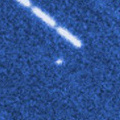
|
It brightened up to 12.8 mag until March (Mar. 21, Michael Mattiazzo). It must have brightened up to 10.5 mag in May and June, but it was not observable. In the Northern Hemisphere, it will be observable after autumn while the comet will be fading.
Date(TT) R.A. (2000) Decl. Delta r Elong. m1 Best Time(A, h)
July 11 6 58.47 30 28.4 2.432 1.439 9 11.4 3:10 (223, -9)
July 18 7 23.73 31 12.4 2.451 1.468 11 11.6 3:16 (224, -7)
|

|
Now it is 12.5 mag and visible visually (July 7, Con Stoitsis). It will brighten up to 11 mag in 2015 autumn. In this apparition, it is observable until the highlight while the comet is brightening.
Date(TT) R.A. (2000) Decl. Delta r Elong. m1 Best Time(A, h)
July 11 12 53.58 -0 10.9 1.684 1.878 84 12.2 21:00 ( 64, 31)
July 18 13 3.30 -1 29.4 1.717 1.842 80 12.0 20:55 ( 66, 28)
|
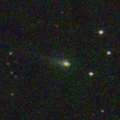
|
Now it is 14.0 mag (June 27, Chris Wyatt). It will brighten up to 11 mag from August to October. In the Northern Hemisphere, it will be getting higher gradually after July, then it keeps observable in good condition. In the Southern Hemisphere, it keeps low until November.
Date(TT) R.A. (2000) Decl. Delta r Elong. m1 Best Time(A, h)
July 11 4 16.02 19 52.8 1.861 1.308 42 12.4 3:10 (255, 13)
July 18 4 43.38 21 22.1 1.831 1.284 42 12.2 3:16 (254, 15)
|

|
Now it is 13.5 mag (July 10, Jakub Cerny). In 2015, it keeps 13-14 mag and will be observable in good condition for a long time.
Date(TT) R.A. (2000) Decl. Delta r Elong. m1 Best Time(A, h)
July 11 19 18.49 -9 2.5 2.570 3.567 166 13.1 0:06 ( 0, 46)
July 18 19 15.95 -9 23.7 2.589 3.584 166 13.1 23:32 ( 0, 46)
|

|
Brightening rapidly. Now it is 14.9 mag and visible visually (July 10, Jakub Cerny). It is expected to brighten up to 11 mag from summer to autumn. In the Northern Hemisphere, it keeps observable in good condition in the morning sky. It keeps locating extremely low from summer to autumn.
Date(TT) R.A. (2000) Decl. Delta r Elong. m1 Best Time(A, h)
July 11 1 43.14 31 32.6 0.693 1.057 73 13.7 3:10 (260, 49)
July 18 2 40.10 35 3.1 0.688 0.986 67 13.1 3:16 (253, 45)
|

|
It brightened up to 13.4 mag in outburst on July 11 (John Drummond).
Date(TT) R.A. (2000) Decl. Delta r Elong. m1 Best Time(A, h)
July 11 17 24.76 -31 11.2 5.103 6.027 153 13.4 22:09 ( 0, 24)
July 18 17 21.95 -31 0.1 5.155 6.025 146 13.4 21:38 ( 0, 24)
|
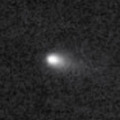
|
It brightened up to 15.9 mag in June as predicted (June 23, Ken-ichi Kadota). It was expected to be observable at 13 mag in good condition from summer to autumn. However, Jean-Gabriel Bosch detected the comet became disintegrating in July. Now it is so faint as 18.7 mag (July 13, Jean-Gabriel Bosch). The fragment D was also observed at 21.9 mag in May (May 30, Pan-STARRS 1).
Date(TT) R.A. (2000) Decl. Delta r Elong. m1 Best Time(A, h)
July 11 0 50.95 -2 6.6 1.276 1.729 97 14.2 3:10 (309, 39)
July 18 1 5.20 -1 5.3 1.217 1.718 100 14.0 3:16 (313, 43)
|
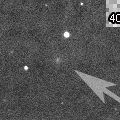
|
Now it is 13.6 mag (June 27, Chris Wyatt). It is getting higher gradually in the morning sky. However, it will be fading rapidly, and will be fainter than 18 mag in late August.
Date(TT) R.A. (2000) Decl. Delta r Elong. m1 Best Time(A, h)
July 11 4 1.78 5 15.0 2.444 1.961 50 14.3 3:10 (269, 7)
July 18 4 15.03 5 18.0 2.436 2.010 53 14.8 3:16 (272, 12)
|
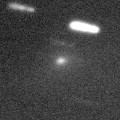
|
Now it is 14.1 mag and visible visually (July 10, Jakub Cerny). Distant object, but it keeps observable at 14-15 mag for a long time from 2015 to 2016.
Date(TT) R.A. (2000) Decl. Delta r Elong. m1 Best Time(A, h)
July 11 21 30.02 -0 42.9 4.569 5.403 141 14.6 2:17 ( 0, 54)
July 18 21 28.50 -0 53.9 4.492 5.382 148 14.6 1:48 ( 0, 54)
|

|
It brightened very rapidly. Now it is so bright as 13.8 mag and visible visually (May 11, Sandor Szabo). It is not observable already in the Northern Hemisphere. It will be unobservable in early August also in the Southern Hemisphere.
Date(TT) R.A. (2000) Decl. Delta r Elong. m1 Best Time(A, h)
July 11 10 9.05 2 37.1 4.064 3.431 45 14.6 21:00 ( 93, 0)
July 18 10 17.78 1 44.4 4.129 3.435 41 14.7 20:55 ( 94, -3)
|

|
Now it is 15.1 mag (Apr. 17, Taras Prystavski). It will pass close to the earth from spring to summer in 2016, and it is expected to be observable at 6-7 mag in good condition. In the Northern Hemispehre, it will be getting higher gradually in the morning sky, then it keeps observable in excellent condition until winter. In the Southern Hemisphere, it will be observable after mid August, but it keeps very low until winter.
Date(TT) R.A. (2000) Decl. Delta r Elong. m1 Best Time(A, h)
July 11 5 26.53 34 27.4 4.746 3.873 27 14.8 3:10 (233, 8)
July 18 5 30.25 34 42.8 4.615 3.802 32 14.6 3:16 (237, 13)
|
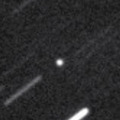
|
Now it is 16.7 mag (July 10, J. Gonzalez). It keeps observable after this while the comet will be getting brighter graudually. It will brighten up to 11 mag from autumn to winter. But it locates low at that time.
Date(TT) R.A. (2000) Decl. Delta r Elong. m1 Best Time(A, h)
July 11 14 0.85 2 0.2 1.454 1.899 98 15.2 21:00 ( 51, 44)
July 18 14 5.88 0 29.3 1.482 1.857 94 14.9 20:55 ( 54, 40)
|
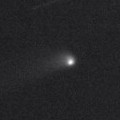
|
Now it is 16.5 mag (July 10, A. Maury, J.-G. Bosch, T. Noel). It will brighten up to 14 mag from 2015 to 2016. It keeps observable in good condition for a while.
Date(TT) R.A. (2000) Decl. Delta r Elong. m1 Best Time(A, h)
July 11 3 15.01 8 2.9 4.620 4.208 60 15.1 3:10 (273, 19)
July 18 3 14.78 8 42.4 4.501 4.201 66 15.0 3:16 (278, 26)
|

|
It brightened up to 6.9 mag in 2014 autumn (Oct. 17, Marco Goiato). Now it is fading. It has already faded down to 15.9 mag (June 3, K. Hills). In the Southern Hemisphere, it keeps observable in good condition until the comet fades out. In the Northern Hemisphere, it keeps observable until winter, but it locates somewhat low.
Date(TT) R.A. (2000) Decl. Delta r Elong. m1 Best Time(A, h)
July 11 0 45.52 -20 28.6 3.934 4.310 104 15.1 3:10 (323, 25)
July 18 0 40.94 -21 21.9 3.893 4.381 112 15.2 3:16 (332, 29)
|

|
Now it is 14.8 mag (June 24, iTelescope Observatory, Siding Spring). It keeps 15 mag for a long time from 2014 to 2015. It is observable in excellent condition in the Northern Hemisphere. It locates low in the Southern Hemisphere.
Date(TT) R.A. (2000) Decl. Delta r Elong. m1 Best Time(A, h)
July 11 2 17.29 26 41.1 4.293 4.020 67 15.2 3:10 (262, 40)
July 18 2 19.93 28 15.6 4.209 4.036 73 15.2 3:16 (264, 47)
|
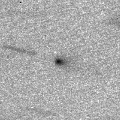
|
Now it is 14.2 mag (June 14, Catalina Sky Survey). It will be observable in excellent condition at 14-15 mag in summer.
Date(TT) R.A. (2000) Decl. Delta r Elong. m1 Best Time(A, h)
July 11 0 7.58 3 39.3 1.231 1.788 104 15.2 3:10 (316, 50)
July 18 0 15.72 4 26.1 1.191 1.805 109 15.2 3:16 (325, 55)
|

|
It keeps 13 mag for a long time from 2015 autumn to 2016 summer. In the Northern Hemispehre, it keeps observable in good condition for a long time. It keeps unobservable in the Southern Hemisphere.
Date(TT) R.A. (2000) Decl. Delta r Elong. m1 Best Time(A, h)
July 11 5 15.25 41 15.0 4.466 3.646 32 15.6 3:10 (229, 14)
July 18 5 23.49 42 32.3 4.362 3.600 36 15.5 3:16 (231, 19)
|

|
First return of a periodic comet discovered in 1994. Now it is 16.0 mag (June 27, iTelescope Observatory, Siding Spring). It will brighten up to 15 mag from summer to autumn, and will be observable in excellent condition in the Southern Hemisphere. It locates somewhat low in the Northern Hemisphere.
Date(TT) R.A. (2000) Decl. Delta r Elong. m1 Best Time(A, h)
July 11 23 3.69 -33 36.9 1.849 2.618 129 15.6 3:10 (351, 21)
July 18 23 5.88 -34 5.8 1.780 2.596 134 15.5 3:16 (358, 21)
|

|
Now it is 16.0 mag (May 26, Yasukazu Ikari). It is observable at 15-16 mag in good condition until autumn. It locates somewhat low in the Northern Hemisphere.
Date(TT) R.A. (2000) Decl. Delta r Elong. m1 Best Time(A, h)
July 11 18 5.68 -23 27.2 7.007 7.985 163 15.8 22:49 ( 0, 32)
July 18 18 0.75 -23 48.1 7.082 8.016 155 15.8 22:17 ( 0, 31)
|

|
It brightened up to 11-12 mag in 2012. It has already faded down to 15.5 mag (May 11, Sandor Szabo). It will be unobservable in early August also in the Southern Hemisphere. But it will be observable at 16 mag in good condition again from winter to next spring.
Date(TT) R.A. (2000) Decl. Delta r Elong. m1 Best Time(A, h)
July 11 10 56.76 -3 47.0 10.256 9.774 59 15.9 21:00 ( 81, 6)
July 18 10 57.50 -3 48.0 10.392 9.812 52 15.9 20:55 ( 84, 2)
|

|
It keeps 15-16 mag for a long time until 2016. It keeps observable in excellent condition in the Northern Hemisphere. It keeps unobservable in the Southern Hemisphere.
Date(TT) R.A. (2000) Decl. Delta r Elong. m1 Best Time(A, h)
July 11 4 39.00 46 22.0 5.963 5.228 40 16.1 3:10 (228, 22)
July 18 4 45.62 47 26.9 5.893 5.222 44 16.0 3:16 (229, 27)
|

|
It brightened up to 13 mag in 2014. Now it is 16.7 mag (June 3, Taras Prystavski). It will be fading slowly after this. It is observable at 16 mag in excellent condition from summer to winter in 2015.
Date(TT) R.A. (2000) Decl. Delta r Elong. m1 Best Time(A, h)
July 11 1 31.28 1 54.1 3.658 3.734 86 16.1 3:10 (296, 35)
July 18 1 34.81 2 8.1 3.572 3.750 92 16.1 3:16 (303, 41)
|

|
Now it is 18.0 mag (June 27, M. Jaeger, E. Prosperi, S. Prosperi, W. Vollmann). It will be observable at 15 mag in good condition in autumn. However, it is fainter than this ephemeris recently.
Date(TT) R.A. (2000) Decl. Delta r Elong. m1 Best Time(A, h)
July 11 1 20.71 7 9.3 2.016 2.208 86 16.3 3:10 (294, 41)
July 18 1 31.31 7 50.5 1.928 2.193 90 16.2 3:16 (298, 46)
|
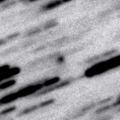
|
It brightened up to 16.4 mag in 2014 (Nov. 14, J. F. Hernandez). Now it is 17.5 mag (June 28, B. Lutkenhoner, M. Kumrucu-Lohmiller, P. Cox). It will be observable at 16 mag again from summer to autumn in 2015.
Date(TT) R.A. (2000) Decl. Delta r Elong. m1 Best Time(A, h)
July 11 2 53.74 21 57.3 2.589 2.275 60 16.2 3:10 (263, 30)
July 18 3 5.72 22 53.4 2.538 2.294 64 16.2 3:16 (265, 35)
|

|
It brightened up to 9.2 mag in March (Mar. 9, Juan Jose Gonzalez). Now it is fading. It has already faded down to 17.9 mag (July 9, A. Diepvens). In the Northern Hemisphere, it will be getting higher gradually after this. It is not observable after this in the Southern Hemisphere.
Date(TT) R.A. (2000) Decl. Delta r Elong. m1 Best Time(A, h)
July 11 13 20.48 87 45.6 2.478 2.296 67 16.3 21:00 (178, 37)
July 18 14 15.20 83 41.3 2.542 2.389 69 16.6 20:55 (175, 40)
|

|
First return of a periodic comet discovered in 2008. Now it is 16.8 mag (June 21, J. Nicolas, C. Rinner, F. Kugel, A. Klotz). It will approach to the earth from spring to summer, and brighten rapidly. It will brighten up to 16 mag, and will be observable in good condition.
Date(TT) R.A. (2000) Decl. Delta r Elong. m1 Best Time(A, h)
July 11 1 40.30 -4 29.6 0.703 1.203 86 16.3 3:10 (300, 29)
July 18 2 5.67 -4 37.0 0.713 1.215 87 16.4 3:16 (302, 31)
|
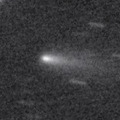
|
Now it is bright as 14.8 mag (June 21, Hiroshi Abe). In this apparition, it turns to approach to the sun down to 1.17 a.u., and it was expected to brighten up to 13 mag from March to May. It will be fading after this.
Date(TT) R.A. (2000) Decl. Delta r Elong. m1 Best Time(A, h)
July 11 21 39.46 -7 41.8 0.565 1.507 143 16.6 2:27 ( 0, 47)
July 18 21 33.50 -8 33.9 0.587 1.557 151 16.9 1:53 ( 0, 47)
|

|
Now it is 16.7 mag (June 12, Mitsunori Tsumura). It is observable at 16.5 mag in good condition from May to July.
Date(TT) R.A. (2000) Decl. Delta r Elong. m1 Best Time(A, h)
July 11 16 24.89 -6 52.7 0.883 1.758 135 16.7 21:09 ( 0, 48)
July 18 16 29.27 -6 38.9 0.924 1.759 130 16.8 20:55 ( 3, 48)
|

|
Now it is 16.4 mag (June 12, Takaaki Oribe). It is fading, but it is observable at 17 mag in good condition until late autumn. The fragments B and C are already fainter than 20 mag (June 12, Takaaki Oribe).
Date(TT) R.A. (2000) Decl. Delta r Elong. m1 Best Time(A, h)
July 11 23 43.57 11 15.4 5.611 5.988 107 16.8 3:10 (317, 60)
July 18 23 40.85 10 43.6 5.542 6.033 114 16.8 3:16 (335, 64)
|

|
Now it is 19 mag (June 13, WISE). It is expected to brighten rapidly up to 15 mag in August. It is observable in good condition in the Southern Hemisphere. It locates somewhat low in the Northern Hemisphere until August.
Date(TT) R.A. (2000) Decl. Delta r Elong. m1 Best Time(A, h)
July 11 12 24.71 -9 21.8 0.466 1.052 81 17.2 21:00 ( 62, 20)
July 18 12 40.16 -9 45.4 0.429 1.019 78 16.8 20:55 ( 63, 18)
|

|
First return of a new periodic comet which brightened up to 12 mag in 2009. Now it is 18.3 mag (June 10, Hidetaka Sato), fainter than this ephemeris by 1 mag. It will be 17-18 mag at best in this apparition. It is observable in good condition in the Southern Hemisphere. In the Northern Hemisphere, it keeps locating extremely low after June.
Date(TT) R.A. (2000) Decl. Delta r Elong. m1 Best Time(A, h)
July 11 11 31.25 -8 40.2 1.502 1.483 69 16.9 21:00 ( 72, 10)
July 18 11 51.40 -9 26.4 1.518 1.464 67 16.9 20:55 ( 71, 9)
|

|
Now it is 16.2 mag (June 21, Space Surveillance Telescope, Atom Site). It keeps observable at 17 mag from spring to summer. It locates somewhat low in the Northern Hemisphere.
Date(TT) R.A. (2000) Decl. Delta r Elong. m1 Best Time(A, h)
July 11 16 39.22 -24 28.9 2.344 3.218 143 16.9 21:23 ( 0, 31)
July 18 16 37.72 -24 2.9 2.413 3.226 136 17.0 20:55 ( 0, 31)
|
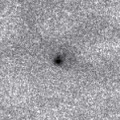
|
It must have brightened up to 11 mag from January to February, but no observations have been reported. Now it is 16.9 mag (July 9, A. Maury, J.-G. Bosch, T. Noel). In the Southern Hemisphere, it is observable in the morning sky after this while the comet will be fading. In the Northern Hemisphere, it will be getting higher after July, but the comet will be faitner than 17 mag.
Date(TT) R.A. (2000) Decl. Delta r Elong. m1 Best Time(A, h)
July 11 2 27.69 -9 21.3 2.145 2.173 77 17.0 3:10 (295, 17)
July 18 2 35.61 -9 34.9 2.121 2.227 82 17.1 3:16 (300, 22)
|
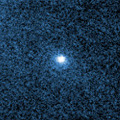
|
Now it is 16.5 mag (June 3, Taras Prystavski). It keeps observable in good condition until the comet fades out. In 2014, it must have been observable at 14 mag in good condition in the Southern Hemisphere.
Date(TT) R.A. (2000) Decl. Delta r Elong. m1 Best Time(A, h)
July 11 0 51.53 -0 23.1 3.518 3.770 96 17.0 3:10 (307, 41)
July 18 0 52.47 0 10.4 3.465 3.819 102 17.0 3:16 (316, 46)
|
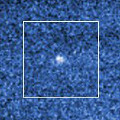
|
It is expected to brighten up to 15 mag from autum to next spring, and to be observable in excellent condition in the Northern Hemisphere. It keeps unobservable in the Southern Hemisphere.
Date(TT) R.A. (2000) Decl. Delta r Elong. m1 Best Time(A, h)
July 11 2 9.88 39 25.4 2.971 2.731 66 17.2 3:10 (247, 45)
July 18 2 17.04 42 23.8 2.843 2.682 70 17.1 3:16 (244, 51)
|
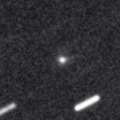
|
Now it is 17.4 mag (June 12, Mitsunori Tsumura). It will brighten up to 14 mag and will be observable in good condition in 2016.
Date(TT) R.A. (2000) Decl. Delta r Elong. m1 Best Time(A, h)
July 11 12 42.83 1 29.3 3.325 3.324 81 17.1 21:00 ( 68, 30)
July 18 12 47.80 0 51.9 3.388 3.291 75 17.1 20:55 ( 71, 27)
|

|
Now it is 19.6 mag (June 22, iTelescope Observatory, Siding Spring). It is expected to brighten rapidly, and to be observable at 13.5 mag in good condition in autumn.
Date(TT) R.A. (2000) Decl. Delta r Elong. m1 Best Time(A, h)
July 11 1 35.19 -5 9.1 1.730 1.979 88 17.4 3:10 (302, 30)
July 18 1 49.74 -4 48.5 1.628 1.937 91 17.1 3:16 (305, 33)
|

|
It approached to the earth, and brightened up to 12.0 mag from April to May (Apr. 24, Taras Prystavski). Now it is fading rapidly. It has already faded down to 17.9 mag (July 1, W. Hasubick). It will be fainter than 18 mag in late July. It is observable in excellent condition for a while.
Date(TT) R.A. (2000) Decl. Delta r Elong. m1 Best Time(A, h)
July 11 22 5.22 33 12.2 0.951 1.630 111 17.1 2:52 ( 0, 88)
July 18 21 58.74 35 14.7 0.991 1.698 115 17.6 2:18 (180, 90)
|
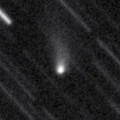
|
It brightened up to 15.3 mag in winter (Jan. 17, Taras Prystavski). Now it is fading. It has already faded down to 17.8 mag (June 3, Taras Prystavski). It is observable in good condition in the Southern Hemisphere. It will be observable in good condition after this also in the Northern Hemisphere.
Date(TT) R.A. (2000) Decl. Delta r Elong. m1 Best Time(A, h)
July 11 0 10.07 -15 39.9 2.000 2.553 111 17.2 3:10 (329, 33)
July 18 23 55.74 -15 11.5 1.930 2.603 121 17.2 3:16 (342, 38)
|
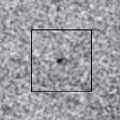
|
Now it is 20.2 mag (June 15, Jean-Francois Soulier). It is expected to brighten rapidly, and to be observable at 16 mag in good condition from summer to winter. But actually, it is much fainter than this ephemeris.
Date(TT) R.A. (2000) Decl. Delta r Elong. m1 Best Time(A, h)
July 11 23 35.49 -15 35.9 1.979 2.631 119 17.4 3:10 (338, 37)
July 18 23 37.08 -15 13.1 1.871 2.595 125 17.2 3:16 (348, 39)
|
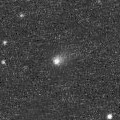
|
Now it is 17.7 mag (July 4, B. Lutkenhoner, P. Cox). It keeps 17 mag until July. It is observable in excellent condition in the Southern Hemisphere. It locates somewhat low in the Northern Hemisphere.
Date(TT) R.A. (2000) Decl. Delta r Elong. m1 Best Time(A, h)
July 11 16 3.65 -23 21.7 1.806 2.627 135 17.5 21:00 ( 3, 32)
July 18 16 4.02 -23 22.9 1.880 2.637 128 17.6 20:55 ( 9, 31)
|

|
Now it is 17.7 mag (May 10, A. Maury, J.-F. Soulier). It has brightened in outburst up to 14 mag twice, in 2006 January and 2011 May. It is around the perihelion now. It keeps observable at 17 mag for a long time after this.
Date(TT) R.A. (2000) Decl. Delta r Elong. m1 Best Time(A, h)
July 11 23 29.36 -2 22.6 5.309 5.829 116 17.6 3:10 (334, 50)
July 18 23 29.43 -2 24.4 5.218 5.832 122 17.5 3:16 (347, 52)
|

|
Now it is 17.4 mag (June 14, A. Diepvens). It was observed at 17 mag in 2014 summer. In the Northern Hemisphere, it is observable at 17.5 mag in excellent condition also in 2015. It is not observable in the Southern Hemisphere.
Date(TT) R.A. (2000) Decl. Delta r Elong. m1 Best Time(A, h)
July 11 22 20.77 54 30.7 4.179 4.369 93 17.5 3:08 (180, 70)
July 18 22 19.28 54 51.9 4.150 4.397 97 17.5 2:39 (180, 70)
|
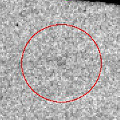
|
Now it is 17.0 mag (June 20, iTelescope Observatory, Siding Spring). First return of a comet re-discovered after 112-year blank in 2008. It brightened up to 12 mag in 2008. In this apparition, it was expected to brighten up to 15 mag from spring to summer, but it is fainter than predicted. It keeps locating low in the morning sky for a while.
Date(TT) R.A. (2000) Decl. Delta r Elong. m1 Best Time(A, h)
July 11 2 46.33 13 31.2 1.799 1.650 64 17.5 3:10 (272, 28)
July 18 3 3.11 13 40.9 1.774 1.676 67 17.6 3:16 (275, 31)
|

|
Now it is 17.2 mag (June 13, iTelescope Observatory, Siding Spring). It will be observable at 17.5 mag in good condition in summer.
Date(TT) R.A. (2000) Decl. Delta r Elong. m1 Best Time(A, h)
July 11 1 44.53 7 48.8 1.372 1.576 81 17.7 3:10 (288, 37)
July 18 2 1.04 8 31.9 1.338 1.589 83 17.7 3:16 (291, 40)
|
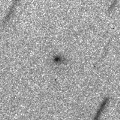
|
Now it is 17.9 mag (June 28, J. Nicolas, C. Rinner, F. Kugel, A. Klotz). It keeps 17 mag until summer.
Date(TT) R.A. (2000) Decl. Delta r Elong. m1 Best Time(A, h)
July 11 16 25.36 31 59.8 1.707 2.288 111 17.8 21:07 ( 0, 87)
July 18 16 1.35 30 12.4 1.848 2.332 105 18.0 20:55 ( 61, 80)
|

|
Far object. Now it is 18.6 mag (June 17, K. Sarneczky). It keeps observable at 18 mag in good condition from summer to autumn.
Date(TT) R.A. (2000) Decl. Delta r Elong. m1 Best Time(A, h)
July 11 19 57.09 -2 24.0 5.586 6.541 158 17.9 0:44 ( 0, 53)
July 18 19 55.03 -2 41.8 5.568 6.539 161 17.9 0:15 ( 0, 52)
|

|
Very far object. However, outburst occured on Feb. 20, and it brightened up to 15 mag. It was reported so bright visually as 11.8 mag (Mar. 11, Marco Goiato). However, it has already faded down to 17.8 mag (May 16, K. Hills). It locates high in the Southern Hemisphere. But it locates somewhat low in the Northern Hemisphere.
Date(TT) R.A. (2000) Decl. Delta r Elong. m1 Best Time(A, h)
July 11 12 7.36 -19 9.8 9.224 9.133 81 17.9 21:00 ( 58, 10)
July 18 12 9.51 -19 6.3 9.330 9.132 75 18.0 20:55 ( 61, 6)
|
|
![]()
 29P/Schwassmann-Wachmann 1
29P/Schwassmann-Wachmann 1 51P/Harrington
51P/Harrington 6P/d'Arrest
6P/d'Arrest C/2011 KP36 ( Spacewatch )
C/2011 KP36 ( Spacewatch ) C/2014 W11 ( PanSTARRS )
C/2014 W11 ( PanSTARRS ) C/2013 X1 ( PanSTARRS )
C/2013 X1 ( PanSTARRS ) 10P/Tempel 2
10P/Tempel 2 C/2014 A4 ( SONEAR )
C/2014 A4 ( SONEAR ) C/2012 K1 ( PanSTARRS )
C/2012 K1 ( PanSTARRS ) C/2014 N3 ( NEOWISE )
C/2014 N3 ( NEOWISE ) 57P/du Toit-Neujmin-Delporte
57P/du Toit-Neujmin-Delporte C/2014 W2 ( PanSTARRS )
C/2014 W2 ( PanSTARRS ) 318P/2014 M6 ( McNaught-Hartley )
318P/2014 M6 ( McNaught-Hartley ) C/2010 S1 ( LINEAR )
C/2010 S1 ( LINEAR ) C/2006 S3 ( LONEOS )
C/2006 S3 ( LONEOS ) C/2013 V4 ( Catalina )
C/2013 V4 ( Catalina ) 117P/Helin-Roman-Alu 1
117P/Helin-Roman-Alu 1 61P/Shajn-Schaldach
61P/Shajn-Schaldach 44P/Reinmuth 2
44P/Reinmuth 2 C/2015 C2 ( SWAN )
C/2015 C2 ( SWAN ) 319P/2015 G1 ( Catalina-McNaught )
319P/2015 G1 ( Catalina-McNaught ) 218P/LINEAR
218P/LINEAR 221P/LINEAR
221P/LINEAR C/2011 J2 ( LINEAR )
C/2011 J2 ( LINEAR ) 320P/2015 HC10 ( McNaught )
320P/2015 HC10 ( McNaught ) 325P/2015 J4 ( Yang-Gao )
325P/2015 J4 ( Yang-Gao ) 299P/2014 D2 ( Catalina-PanSTARRS )
299P/2014 D2 ( Catalina-PanSTARRS ) 7P/Pons-Winnecke
7P/Pons-Winnecke C/2015 K1 ( MASTER )
C/2015 K1 ( MASTER ) C/2014 S2 ( PanSTARRS )
C/2014 S2 ( PanSTARRS ) 53P/Van Biesbroeck
53P/Van Biesbroeck 230P/LINEAR
230P/LINEAR C/2015 F2 ( Polonia )
C/2015 F2 ( Polonia ) C/2014 AA52 ( Catalina )
C/2014 AA52 ( Catalina ) 50P/Arend
50P/Arend P/2015 F1 ( PanSTARRS )
P/2015 F1 ( PanSTARRS ) 174P/(60558) 2000 EC98 ( Echeclus )
174P/(60558) 2000 EC98 ( Echeclus ) C/2013 G3 ( PanSTARRS )
C/2013 G3 ( PanSTARRS ) 205P/Giacobini
205P/Giacobini 220P/McNaught
220P/McNaught C/2015 H1 ( Bressi )
C/2015 H1 ( Bressi ) C/2012 LP26 ( Palomar )
C/2012 LP26 ( Palomar ) C/2013 C2 ( Tenagra )
C/2013 C2 ( Tenagra )![]()













































